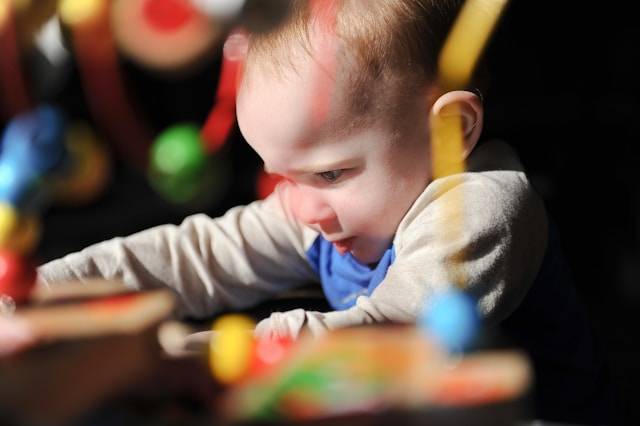Creating a safe and functional home is of utmost importance for families with young children. Parents naturally want to ensure that their children can roam freely while minimizing hazards. By carefully considering design choices and incorporating appropriate features, homes can be transformed into nurturing environments where kids can thrive. Safety is balanced with functionality, allowing families to enjoy their spaces with peace of mind. This article explores how families can create such spaces by considering different aspects of design, from furniture selection to the use of effective fixtures.

Childproofing Essentials for a Safe Environment
Childproofing a home involves thoughtful strategies that prevent accidents and injuries. Start by identifying potential risks in every room. Video game consoles, cords, and furnishings with sharp edges can pose dangers to inquisitive toddlers. Investing in essentials like corner guards, outlet covers, and safety gates ensures that children can explore without constant supervision.
Families may benefit from getting their children involved in these safety discussions. Engaging young ones in conversations about safe behavior enhances their understanding of potential hazards. This technique can foster a sense of responsibility in them, leading to increased safety awareness as they grow older. Creating clear boundaries around certain areas in the home encourages children to respect designated spaces and avoid those deemed unsafe.
Choosing Safer Furniture for Family Living Spaces
Furniture selection plays a crucial role in enhancing safety in a family home. In looking for pieces, opt for furniture made from non-toxic materials that don’t release harmful chemicals into the air. When purchasing sofas, tables, or chairs, choose designs that are durable and have rounded edges. Low-sitting furniture pieces can reduce the risk of injury should a child accidentally fall. Fabric choices matter, since stain-resistant materials are practical for homes with young kids.
Consider multifunctional furniture, such as ottomans that double as storage spaces. This tactic helps to declutter living areas, reducing tripping hazards that come with scattered toys and other belongings. Parents can gently encourage children to put away their belongings with clear instructions, making it a fun challenge that fosters responsibility.
Stylish Yet Safe Fixtures and Hardware
Functional design can blend seamlessly with aesthetics, particularly when selecting fixtures and hardware for a home. Families should look for solutions that enhance the home’s décor. A surprising amount of safety-oriented designs are available, such as stylish latches or window locks, ensuring that children can’t escape or access hazardous areas while maintaining an attractive look.
Selecting the right hardware contributes to the safety ethos while reflecting personal style throughout the home. It’s worth exploring a range of door hardware that suits various design tastes and ensures ease of use for both children and parents. With door handles, locks, and other devices readily available, families can choose options that are both beautiful and functional, helping them achieve a harmonious blend of style and safety.
The Importance of Layout and Space Planning
An effective layout significantly influences how safe and functional a space feels for families. Start by ensuring that all pathways in higher-traffic areas, such as hallways and entryways, are free of obstacles. A clear design flow makes it easier for parents to keep a watchful eye on children engaged in play. Using furniture to create designated play areas can be beneficial. Limiting play to specific zones allows for more controlled supervision while creating a functional environment where families can both relax and enjoy kids’ activities.
Allocating space for storing toys and activities can enhance the area’s usability, making cleanup more manageable. Such considerations can lead to a layout that encourages interaction. Open spaces that facilitate movement can make family gatherings or playdates more enjoyable and integrated, inspiring quality time for everyone involved.
Incorporating Smart Technology for Added Safety
Incorporating technology into the home can greatly enhance safety for families with children. Smart home devices can regulate security, lighting, and even appliances, creating a more connected and secure environment. Smart locks on doors ensure that parents can monitor entry points easily without having to be physically present. Many of these systems send alerts to smartphones, offering real-time notifications. Surveillance cameras inside and outside a property provide an additional layer of safety, allowing parents to keep an eye on children playing both indoors and outdoors.
Other devices can control environmental factors like temperature, which ensures that homes remain comfortable and safe for kids. When looking for smart technology, factor in ease of use. Parents can teach children how these devices work, offering them a sense of control and involvement in maintaining safety at home. Awareness of their existence encourages kids to understand the importance of security and enhances family safety culture.
Creating Outdoor Spaces That Encourage Play
Outdoor areas should not be overlooked when creating a safe environment for families. Designing these spaces with children in mind can promote healthy outdoor play while keeping them safe from potential dangers. One option is to add fences to mark property boundaries clearly, which helps keep children within safe areas. Planting safe natural features, such as soft ground cover, can cushion potential falls. Incorporating elements such as climbing structures, swings, and slides provides avenues for kids to exercise while having fun.
When possible, consider using sustainable materials for these structures. They support safety, and they promote environmental friendliness in family practices. Regularly checking outdoor play equipment for damage is crucial to ensure continued safety. Involving children in this routine helps instill valuable life skills as they learn to care for their play areas, strengthening their sense of responsibility.

This proactive approach fosters a heightened awareness of safety. The teachings children absorb will follow them into their teenage years and beyond, creating a lifelong commitment to safety in all aspects of their lives. Thus, families can create safe and functional living spaces that adapt to each stage of childhood. By prioritizing safety while embracing creativity, they can cultivate environments where children can develop into healthy and confident individuals.











